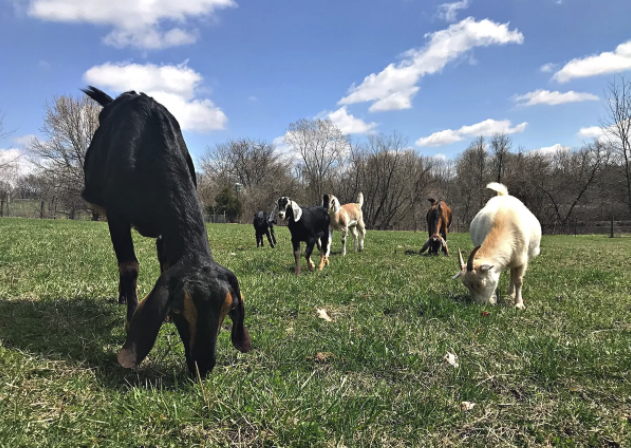
flushing in goats
Share
Hi all! Happy whatever day it is! I hope you all are doing well. Lately on social, I have been talking a lot about flushing in our small dairy goat herd. Small and large scale producers alike are always looking for way to improve their herd. I have found that even at such a small scale that we run, incorporating flushing in our herd has drastically improved our health and outcomes.
So, what is flushing? Flushing is the increase in nutrition in the doe (or ewe, this is applicable in sheep as well) 3 weeks prior to breeding and 3 weeks after breeding. This is done by providing a good quality hay, grain, and or alfalfa during this period of time. Something some of us already do in various ways year round, which I will touch on in a bit. The act of doing such a simple thing for our animals has shown to boost ovulation, embryo implantation and conception rates. Flushing has been known to increase kidding/lambing outcomes by up to 20%! No matter the size of operation you run, that is huge!
In a typical situation, producers will want to feed 0.5 pound, up to no more than one pound of grain per head. The key here is making sure each animal is actually getting that, bunk space is adequate and the highest in the herd isn't continuing to get all the extra nutrition. As always good quality hay and or pasture should be offered, along with fresh water. Incorporating a higher protein feed has also been proven to be beneficial when the pasture is protein deficient. To identify the animals that would benefit from flushing the most you need to take into consideration BCS or Body Condition Score. This is a 1-5 scale with 3-3.5 being middle of the road and what all producers should aim for. Excessively obese animals and overly thin animals do not benefit from flushing the way an animal under good body condition score would. Flushing is best practiced in a mature doe or ewe, but I will tell you from personal experience I have seen a benefit in the entire herd. If your animals are already at this desired BCS, flushing can still be practiced (I do), but benefits won't be as drastic as when done with an animal that can benefit from the nutrition boost more.
After the 3 week before and 3 week after breeding date time period is over, you should return to maintenance feeding for the remainder of the gestation, only increasing again in the last few weeks when the fetal demand is at it's highest. EEDs or Early Embryonic Death is most commonly thought to be linked to poor maternal health or condition, another reason why focusing on maternal nutrition during these times can be highly advantageous.
We are the caretakers, we are the link to a healthy herd, a successful outcome.
Find me on Instagram :Wildoakfarms
Always here to help! Cheers! Xo